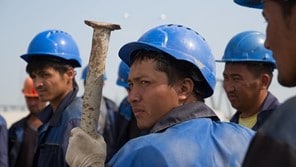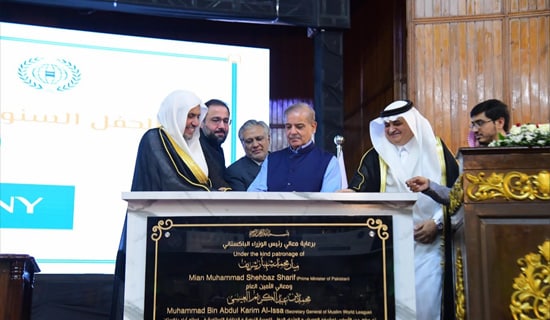One of the most important developments in Russia in the last 20 years has been, without any doubt, emigration and immigration. Even though, during this period, Russia's total population experienced little change (it was 145.2 million people by the end of 2000 and around 143.8 million at the end of 2020; in both cases excluding the population in occupied Crimea),[1] the migrant flows have been enormous and rising.
In 2000, there were around three million foreign citizens permanently residing in Russia (among them, up to a half were ethnic Russians coming from former Soviet republics).[2] In 2019, the number was instead estimated to be between nine and 11 million.[3] UN experts put this figure even as high as 11.6 million.[4] In 2021, the number of foreign citizens decreased to around seven million, due to COVID-19 restrictions that forced many of them to leave Russia.[5] Furthermore, no less than 1.6 million Russians moved out of the country during that time period, with up to one million getting a second passport and hundreds of thousands living abroad permanently without abandoning their first citizenship.

(Source: Vedomosti)
In The Mid-2000s, The Russian Economy Accelerated And Generated A Huge Demand For Cheap Labor
Migration out of and into Russia started in the late 1980s, when mainly Russian Jews moved to Israel and the United States and Germans moved to Germany, under the German repatriation initiative. At the same time, up to 3.1 million ethnic Russians (or, to put it better, Slavonic people) fled the former Soviet republics of Central Asia and the Caucasus to resettle in Russia.[6] This migration movement continued until the early 2000s, but its intensity has greatly decreased since then, because the number of Russians in the post-Soviet countries contracted dramatically (in Kazakhstan it fell from 37.8 percent of the total population in 1989 to 18.4 percent in 2021,[7] in Kyrgyzstan from 21.5 to five percent,[8] and in Uzbekistan from 8.3 to less than three percent).[9]
In the early 2000s a "break" was recorded, as both inward and outward migrations hit their lowest levels. However, the situation changed in the mid-2000s, as the Russian economy accelerated and generated a huge demand for cheap labor, migrant workers flew to Russia. It is worth noting that the improvement of relations between Eastern European post-Soviet republics and the European Union resulted in a dramatic decline in the number of workers coming from Russia's "Western periphery." The number of foreign workers coming from Commonwealth Of Independent States (CIS) countries instead increased, in particular from the Central Asian republics.
Russia's Natural Population Is Declining
Meanwhile, an important factor influencing Russia's demography is the decline of its population in general. According to statistics, between October 2020 and September 2021, the population declined by 997,000.[10] The Russian reproductive rates of 1.47-1.52 are actually among the lowest in Europe.[11] Russian President Vladimir Putin is trying to increase the population and declared that population growth is a "national priority."[12] To this end, in 2020, a new law was passed to simplify the procedure for obtaining Russian citizenship.[13]
The new law, which no longer requires continuous residence and eliminated the requirement of renouncing foreign citizenship to acquire Russian citizenship, resulted in an explosion of applications. In fact, in 2020, the number of people that applied for Russian citizenship was 31.8 percent more than it had been in 2019. However, it is worth noting that the number of people that acquired Russian citizenship in the breakaway republics of Eastern Ukraine, Transnistria, and Georgia is not known. It is safe to say that Russia's official policy is now to counter its population decline with an intake of new naturalized migrants. It should also be pointed out that Russia suffered substantial excess mortality due to COVID-19 with around 707,711 excess deaths since the beginning of the pandemic until the end of September 2021.
The immediate result of such a trend is the overall demise of Russia's human capital since the newcomers have a low education level, speak intermediate-level Russian at best, and are either indifferent to political issues or become devoted "Putinists" due to a sense of gratitude toward the Russian authorities that allowed them to escape their homeland's misery. Combined with the high fertility rates in Russia's North Caucasian republics, the intake of migrants makes "Eurasian Russia" more "Asian" than "European." According to statistics, the percentage of ethnic Russians residing in Russia will continue to decline. Following the present trend, by 2040 ethnic Russians will represent 65 percent of the entire population (in the early 2000s, ethnic Russians represented 82 percent of the population, while today they represent 77 percent of the population).[14]
Russia's Economy Depends On A Migrant Workforce To The Same Degree That It Depends On Oil And Gas Exports
However, the purely demographic consequences of the rising migration are not the most important. In today's Russia, both outward and inward migration is caused by economic factors: Russians who leave the country want to move to Western countries to get a better education, have a career, or do business (the percentage of politically motivated émigrés moving to the West looking for safety and freedom of expression is rather low even under the current conditions), in the same way immigrants coming to Russia are looking for work opportunities and higher wages compared to their home countries.
Foreign workers are very active on Russia's labor market (especially because they cannot get benefits from the authorities except from basic healthcare and schooling for their children). However, the influx of migrants is poorly regulated. For now, foreign workers can buy a "patent," granting them a right to work, and pay "in advance" the payroll taxes that are set between 3.7-5.4 thousand rubles (US $50-75) per month depending on the region.[15] Yet, less than 20 percent of all guest workers are legally hired,[16] and many of them are ready for almost any kind of work in order to make ends meet (this summer, as I needed to clean some construction debris from the area around my house, I headed to the local garden-supply market and hired two young men who, for just 3,000 rubles, or $42, did the job, which took around five hours).
In recent years, some businesses in Russia have become critically dependent on migrant workers, such as residential construction companies, retail trade, restaurants, and housing and communal services. All these sectors are among the most labor-intensive in Russia. Construction employs up to 5.1 million workers, retail trade around ten million workers, restoration and catering around 1.9 million, and housing and city improvement services around 500,000,[17] which altogether comprises roughly a quarter of all existing jobs in the country.[18]
The major issue is not so much that Russian citizens do not want to fill such positions (in the 1990s, such a problem did not exist) but rather that migrants are willing to work for a fraction of the locals' wages. Hence, due to the market's intensive competition, businesses prefer to economize and employ foreign workers. Furthermore, there are no trade unions representing them, and entrepreneurs can dismiss them on very short notice and without much trouble. In case of a dispute between the business owner and his foreign worker employees, the latter has no rights, with a modest "fee" to the police, the business owner can prevent a legal procedure against him.
Since the beginning of the pandemic, more than half of construction and service jobs have been filled by migrants. Nevertheless, leading construction companies estimated the deficit of workers at 1.2 million people after they laid many migrant workers off in 2020.[19] Hence, one could safely say that the Russian economy depends now on the migrant workforce to the same degree that it depends on oil and gas exports.
In the Midst Of The Pandemic, Migrant Workers' Cheap Labor Kept Russian Businesses Alive
The effect of migrant workers on the Russian economy is double-edged. On the one hand, migrant workers' cheap labor helped huge sectors of the Russian economy survive, especially during the pandemic, at a time when Russian themselves suffered economically and had no savings to pay for extra goods and services. For example, as a result of COVID-19 restrictions and lockdowns, restaurants and grocery stores introduced food delivery services for free. These free services became possible because businesses took advantage of the fact that the crisis created by the pandemic left 30 percent of migrants without jobs, and more than 15 percent were left with no money for basic necessities. Hence, many foreign workers, who were unable to return to their home countries due to sealed borders, agreed to work just for food and some petty cash to survive.[20]
Russian unemployment figures, which are quite low most of the time, do not include those tens of thousands of migrants who are almost permanently looking for any job just to make ends meet. And when, or if, the final consumer demand increases, this pool of cheap labor will make the Russian economy recovery much faster than one may anticipate. This may be seen as the "good side" (alas!) of immigration into Russia.
SUPPORT OUR WORK

On the other hand, the oversupply of cheap labor has had a separate catastrophic effect, as it discourages Russian business from introducing up-to-date production technologies.[21] For Russian entrepreneurs, there is no need to invest in improving technologies and equipment in construction or retail if they can hire cheap labor. It is worth noting that Russian officials recently acknowledged that the current deficit of migrant labor became the major force in pushing productivity figures up in the construction sector.[22]
Moreover, the "black market" of migrant labor is active in large cities, where leading entrepreneurs make deals with local authorities to get permission to hire more foreign laborers for low salaries. In many cases, migrants live in "ghettos" and are brought to the construction site and back to their neighborhood every day with special buses. In Moscow, migrants who clean the streets or oversee the public utilities officially earn up to 45,000 rubles (US $620) per month,[23] but they are obliged to give most of this money back to utility companies' owners or city bureaucrats in cash.[24] The oversupply of migrant labor blocks Russia's productivity growth, which has hovered around zero since the late 2000s,[25] and creates hundreds of corrupt schemes for appropriating the budget funds or bribing "law enforcement" officials. So, in a purely economic sense, immigration seriously damages the Russian economy rather than improving it.
In Russia, Xenophobic Violence Against Migrants Has Become Quite Widespread
Another topic often debated in Russia is the misperception of immigrants as criminals. A person familiar with the Russian press knows that news about quarrels and fighting between different groups of migrants are quite numerous and appear almost every week. However, according to official statistics, migrants account for only 3.5 percent of all registered criminal cases in Russia.[26] Nevertheless, while the migrants contribute greatly to the country's economic achievements, they are often considered freeloaders who came to Russia to get some of its riches. The Russian press often cites the amount of money transferred to migrants' home countries (before the pandemic it had reached $6 billion a year),[27] arguing that this "money is stolen from our country," while nobody cares about $40-50 billion annually sent to offshore accounts in recent years by Russian entrepreneurs and bureaucrats.[28]
Politicians from different political parties and movements – from former deputy prime minister and head of Russian space agency Roscosmos Dmitry Rogozin[29] to jailed opposition leader and prospective Nobel Prize winner Alexei Navalny [30] – have used anti-migrant rhetoric in their campaigns. Xenophobic violence against migrants, and against non-Slavonic people in general, has become quite widespread in Russia. Every year, around 100 people are killed in hate crime attacks, which are a long-time issue that no one wants to resolve or even address properly.
Conclusion
The migration policy in Russia is one of the most complicated and contradictory areas of domestic policy. The Kremlin wants to use and exploit the remnants of Moscow's former empire and this is why the Russian leadership encourages post-Soviet nationals to come, work, and live in the country. This trend contributes to the Russian economy's current achievements but at the same time destroys its competitive advantages in the long term, just as oil and gas do. This is fine for the Kremlin, since Russia's official policies are short-sighted and never look more than three to five years ahead. However, many Russians, who have been fed the myth of their glorious past and their powerful state, have become less and less tolerant toward migrants, who are considered second-class people and by no means equal to the Russians themselves.
The Russian authorities are doomed to live with several contradictions. They want to glorify Russia's "imperial greatness" (it has become common to say that it was Russia, and by no means the Soviet Union, that won the Great Patriotic War in 1945), without any reference to how people are subjugated. They also need migrants to first be guest workers and then loyal citizens of the authoritarian Putinist state. Meanwhile xenophobia is on the rise, even though the Russian government outlawed the so-called nationalist "Russian marches" that were widespread in the 2000s, banned even modest nationalist organizations, and imprisoned far more nationalist activist than liberal ones. How all this may affect the future generations of Russian citizens, whatever their ethnicity, remains hard to predict.
*Dr. Vladislav L. Inozemtsev is MEMRI Russian Media Studies Project Special Advisor
[1] Tass.ru/obschestvo/10570605, January 28, 2021.
[2] Books.google.co.il/books?id=7UbZDQAAQBAJ&pg=PA10&lpg=PA10&dq=%D1%87%D0%B8%D1%81%D0%BB%D0%BE+%D0%BC%D0%B8%D0%B3%D1%80%D0%B0%D0%BD%D1%82%D0%BE%D0%B2+%D0%B2+%D1%80%D0%BE%D1%81%D1%81%D0%B8%D0%B8+%D0%B2+%D0%BA%D0%BE%D0%BD%D1%86%D0%B5+1990-%D1%85&source=bl&ots=P75LAuCwn3&sig=ACfU3U3eU1kBDVTzcgzMPlA3TYshfsHtiQ&hl=en&sa=X&redir_esc=y#v=onepage&q=%D1%87%D0%B8%D1%81%D0%BB%D0%BE%20%D0%BC%D0%B8%D0%B3%D1%80%D0%B0%D0%BD%D1%82%D0%BE%D0%B2%20%D0%B2%20%D1%80%D0%BE%D1%81%D1%81%D0%B8%D0%B8%20%D0%B2%20%D0%BA%D0%BE%D0%BD%D1%86%D0%B5%201990-%D1%85&f=false, accessed October 14, 2021.
[3] Rbc.ru/rbcfreenews/5fd974b79a79476744e0063f, December 16, 2020.
[4] Un.org/en/development/desa/population/migration/data/estimates2/data/UN_MigrantStockTotal_2019.xlsx
[5] Rbc.ru/rbcfreenews/615481a49a7947237a4aa621, September 29, 2021.
[6] Elar.uspu.ru/bitstream/uspu/5719/1/21Bulakh.pdf, accessed October 14, 2021.
[7] Demoscope.ru/weekly/ssp/sng_nac_89.php?reg=5, accessed October 14, 2021.
[8] Demoscope.ru/weekly/ssp/sng_nac_89.php?reg=11, accessed October 14, 2021.
[9] Demoscope.ru/weekly/ssp/sng_nac_89.php?reg=11, accessed October 14, 2021.
[10] Themoscowtimes.com/2021/10/11/russia-records-record-12-month-population-decline-a75262, October 11, 2021.
[11] Statdata.ru/deti, April 16, 2021.
[12] Tass.ru/politika/11204445, April 21, 2021.
[13] Migrantmedia.ru/migracionnoe-zakonodatelstvo-rf/fz-134-federalnyy-zakon-ot-24-04-2020-134-fz-o-vnesenii-izmeneniy-v-federalnyy-zakon-o-grazhdanstve, April 17, 2020; Loc.gov/item/global-legal-monitor/2020-05-01/russia-new-law-eliminates-requirement-to-renounce-foreign-citizenship, May 1, 2020.
[14] Statdata.ru/nacionalnyj-sostav-rossii, accessed October 14, 2021.
[15] Migrantmedia.ru/v-2021-godu-summa-avansovykh-platezhey-ndfl-po-patentu-na-rabotu-izmenitsya-skolko-platit-za-patent-2021/#avans-patent-2021, accessed October 14, 2021.
[16] Tass.ru/obschestvo/11398771, May 18, 2021.
[17] Rosstat.gov.ru/storage/mediabank/Trud_2019.pdf, 2019.
[18] Rosstat.gov.ru/storage/mediabank/Trud_2019.pdf, 2019.
[19] Mk.ru/economics/2021/06/19/v-rossii-zafiksirovali-deficit-migrantov-ne-khvataet-bolee-milliona-rabochikh.html, June 19, 2021.
[20] Vedomosti.ru/society/articles/2020/07/16/834690-migranti-vizhivayut, July 16, 2020.
[21] Demoscope.ru/weekly/2008/0323/tema02.php, March 3-16, 2008.
[22] Realty.ria.ru/20201202/migranty-1587314741.html, December 2, 2020.
[23] Rg.ru/2018/02/14/reg-cfo/petr-biriukov-obnovlenie-moskvy-idet-ne-radi-chempionata.html, February 14, 2018.
[24] Fergana.news/articles/105281, February 18, 2019.
[25] Ac.gov.ru/archive/files/publication/a/14638.pdf, June 2017.
[26] Mk.ru/politics/2020/11/27/kolichestvo-prestupleniy-migrantov-v-rossii-porazilo-svezhie-dannye.html, November 27, 2020.
[27] E-cis.info/news/566/86437, April 18, 2020.
[28] Lenta.ru/news/2020/01/22/billion, January 22, 2020.
[29] Rbc.ru/politics/24/11/2005/5703bb6a9a7947afa08c8e94, November 24, 2005.
[30] Bbc.com/news/world-europe-56181084, February 24, 2021.




